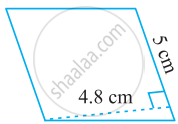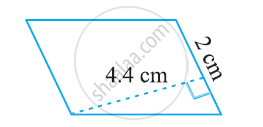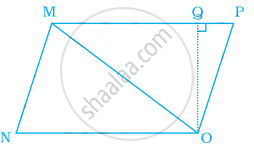Topics
Sets, Relations, and Functions
- Introduction to Sets, Relations and Functions
- Sets and Their Representations
- Types of Sets
- Empty Set (Null or Void Set)
- Finite and Infinite Sets
- Equal Sets
- Subsets
- Power Set
- Universal Set
- Venn Diagrams
- Operations on Sets
- Union of Sets
- Intersection of Sets
- Disjoint Sets
- Difference of Sets
- Complement of a Set
- Cardinal Number of Sets
- Practical Problems on Union and Intersection of Two Sets
- Cartesian Product of Sets
- Concept of Relation
- Types of Relations
- Concept of Functions
- Types of Functions
- Algebra of Real Functions
- Algebraic Operations on Functions
Complex Numbers and Quadratic Equations
- Introduction of Complex Number
- Concept of Complex Numbers
- Complex Numbers as Ordered Pairs of Reals
- Representation of Complex Numbers
- Argand Plane and Polar Representation
- Algebraic Operations of Complex Numbers
- Properties of Conjugate, Modulus and Argument (or Amplitude) of Complex Numbers
- Square Root of a Complex Number
- Triangle Inequality
- Integral Powers of Iota
- Rotational Theorem of Complex Number
- Cube Root of Unity
- Geometry of Complex Numbers
- Demoiver's Theorem
- Powers of Complex Numbers
- Quadratic Equations
- Sum and Product of Root
- Nature of Roots of a Quadratic Equation
- Relation Between Coefficients and Roots of a Quadratic Equation
- Formation of a Quadratic Equation with Given Roots
- Application of Quadratic Equation
- Condition for Common Roots
- Maximum and Minimum Value of Quadratic Equation
- Quadratic Expression in Two Variables
- Solution of Quadratic Inequalities
Matrices and Determinants
- Introduction to Matrices and Determinants
- Matrices
- Algebraic Operations on Matrices
- Addition of Matrices
- Multiplication of a Matrix by a Scalar
- Properties of Matrix Addition
- Properties of Scalar Multiplication of a Matrix
- Multiplication of Matrices
- Properties of Multiplication of Matrices
- Types of Matrices
- Determinants
- Order of a Matrix
- Properties of Determinants
- Evaluation of Determinants
- Area of a Triangle Using Determinants
- Adjoint of a Matrix
- Inverse of Matrix
- Inverse of a Matrix by Elementary Transformation
- Inverse of a Square Matrix by the Adjoint Method
- Test of Consistency
- Applications of Determinants and Matrices
- Subtraction of Matrices
- Transpose of a Matrix
- Symmetric and Skew Symmetric Matrices
- Multiplication of Two Determinants
- Minors and Co-factors
- Some Special Cases of Matrix
- Rank of a Matrix
Permutations and Combinations
- Introduction of Permutations and Combinations
- Fundamental Principles of Counting
- Permutations
- Combination
- Meaning of P (n,r) and C (n,r)
- Simple Applications of Permutations and Combinations
- Factorials
- Division and Distribution of Objects
- Dearrangement Theorem
- Sum of Numbers
- Important Result About Point
Mathematical Inductions
- Mathematical Induction
- Principle of Mathematical Induction
- Motivation
- Simple Applications of Mathematical Induction
Binomial Theorem and Its Simple Applications
- Introduction of Binomial Theorem
- Binomial Theorem for Positive Integral Indices
- General and Middle Terms
- Properties of Binomial Coefficient with Simple Application
- Expansion of Binomial
- Coefficient of Any Power of 'X'
- Greatest Term
- Independent Term
- Particular Term from End in Binomial Expansion
- Greatest Binomial Coefficients
- Number of Terms in the Expansion of (x + y + z)n
- Multinomial Theorem
- Infinite Series
- Binomial Theorem for Any Index (Without Proof)
Sequence and Series
- Sequence and Series
- Introduction of Sequence and Series
- Relation Between Arithmetic Mean (A.M.), Geometric Mean (G.M.), Harmonic Mean (H.M.)
- Arithmetico-geometric Sequence
- Arithmetic Progression (A.P.)
- Geometric Progression (G. P.)
- Harmonic Progression (H. P.)
- Insertion of Arithmetic
- Inserting Two or More Geometric Means Between Any Two Numbers
- Sum to N Terms of Special Series
- Arithmetico-Geometric Progression
- Some Special Sequences
Limit, Continuity, and Differentiability
- Concept of Limits
- Real-Valued Functions
- Limits by Factorisation, Substitution and Rationalisation
- Algebra of Limits
- Limits of Polynomials and Rational Functions
- Limits of Logarithmic Functions
- Limits of Exponential Functions
- Limits of Trigonometric Functions
- Inverse Functions
- Graphs of Simple Functions
- Concept of Continuity
- Concept of Differentiability
- Differentiation of the Sum, Difference, Product, and Quotient of Two Functions
- Derivatives of Composite Functions - Chain Rule
- Derivatives of Trigonometric Functions
- Derivatives of Inverse Trigonometric Functions
- Derivative of Logarithmic Functions
- Derivatives of Exponential Functions
- Derivative of Composite Functions
- Derivatives of Implicit Functions
- Derivatives of Functions in Parametric Forms
- Second Order Derivative
- Mean Value Theorem
- Simple Problems on Applications of Derivatives
- Rate of Change of Bodies or Quantities
- Increasing and Decreasing Functions
- Maxima and Minima
- Tangents and Normals
- Limits Using L-hospital's Rule
- Evaluation of Limits
- Infinite Series
- Successive Differentiation
- nth Derivative of Standard Functions
- Algebra of Derivative (Leibnitz or Product Rule)
- Rolle's Theorem
- Lagrange's Mean Value Theorem (LMVT)
- Approximations
Integral Calculas
- Integration
- Integration as an Inverse Process of Differentiation
- Fundamental Integrals Involving Algebraic Functions
- Fundamental Integrals Involving Trigonometric Functions
- Fundamental Integrals Involving Exponential Functions
- Fundamental Integrals Involving Logarithms Functions
- Methods of Integration: Integration by Substitution
- Methods of Integration: Integration by Parts
- Methods of Integration: Integration Using Partial Fractions
- Integration Using Trigonometric Identities
- Integrals of Some Particular Functions
- Definite Integral as the Limit of a Sum
- Fundamental Theorem of Calculus
- Properties of Definite Integrals
- Evaluation of Definite Integrals
- Area of the Region Bounded by a Curve and a Line
- Area Between Two Curves
- Area Under Simple Curves
- Integration of Some Special Irrational Algebraic Functions
- Evaluation of Definite Integrals by Substitution
- Summation of Series by Integration
Diffrential Equations
- Introduction to Ordinary Differential Equations
- Formation of Ordinary Differential Equations
- Order and Degree of a Differential Equation
- Formation of Differential Equations
- General and Particular Solutions of a Differential Equation
- Solutions of Linear Differential Equation
- Methods of Solving First Order, First Degree Differential Equations
- Differential Equations with Variables Separable Method
- Homogeneous Differential Equations
- Linear Differential Equations
- Linear Differential Equation of First Order
- Solution by Inspection Method
Co-ordinate Geometry
- Brief Review of Cartesian System of Rectanglar Co-ordinates
- Distance Formula
- Section Formula
- Locus
- Equation of Locus
- Translation of Axes
- Slope of a Line
- Parallel and Perpendicular Lines
- Intercepts of a Line on the Co-ordinate Axis
- Various Forms of the Equation of a Line
- Intersection of Two Lines
- Angle Between Two Lines
- Conditions for Concurrence of Three Lines
- Distance of a Point from a Line
- Straight Lines
- Equations of Internal and External by Sectors of Angles Between Two Lines Co-ordinate of the Centroid, Orthocentre, and Circumcentre of a Triangle
- Equations of Internal and External by Sectors of Angles Between Two Lines Co-ordinate of the Centroid, Orthocentre, and Circumcentre of a Triangle
- Equation of Family of Lines Passing Through the Point of Intersection of Two Lines
- Equations of a Circle in Standard Form
- Equations of a Circle in General Form
- Equation of a Circle When the Endpoints of a Diameter Are Given
- Point of Intersection of a Line and a Circle
- General Equation of Tangents
- Conic Sections
- Parabola
- Ellipse
- Hyperbola
- Standard Equations of Parabola
- Standard Equations of an Ellipse
- Standard Equation of Hyperbola
- Condition for Y = mx + c to Be a Tangent and Point(s) of Tangency
- Results of Triangle
- Equation of Locus
- Slope of a Straight Line
- Slope of a Line Joining Two Points
- Various Forms of Equation of a Line
- Shortest Distance Between Two Lines
- Bisector of the Angle Between the Two Lines
- Perpendicular Distance of a Point from a Line
- Foot of the Perpendicular
- Position of a Point with Respect to a Line
- Pedal Points
- Pair of Straight Lines
- Circle
- Standard Equation of a Circle
Three Dimensional Geometry
- Three - Dimensional Geometry
- Coordinates of a Point in Space
- Distance Between Two Points
- Section Formula
- Direction Ratios
- Direction Cosines and Direction Ratios of a Line
- The Angle Between Two Intersecting Lines
- Skew Lines
- Shortest Distance Between Two Lines
- Equations of Line in Different Forms
- Equations of a Plane in Different Forms
- Intersection of the Line and Plane
- Coplanarity of Two Lines
- Angle Between Two Lines
- Projection of a Point on a Line
- Projection of a Line Segment Joining Two Points
- Equation of a Straight Line in Cartesian and Vector Form
- Condition of Parallelism and Perpendicularity of Two Lines
- Perpendicular Distance of a Point from a Line
- Distance Between Skew Lines and Parallel Lines
- Different Forms of Equation of a Plane
- Equation of a Plane
- Equation of Plane Passing Through the Intersection of Two Given Planes
- Angle Between Two Planes
- Angle Between Line and a Plane
- Distance Between Two Parallel Planes
- Position of Point and Line wrt a Plane
- Projection of a Line on a Plane
Vector Algebra
- Introduction to Vector Algebra
- Vectors and Scalars
- Addition of Vectors
- Components of Vector
- Scalar Product and Vector Product
- Scalar Triple Product of Vectors
- Vector Triple Product
- Algebra of Vectors
- Section Formula
- Linear Dependent and Independent Vectors
- Position Vector of a Point in a Space
- Modulus of a Vector
- Collinearity of Three Points
- Coplanarity of Three Vectors and Four Points
- Vector Inequality
- Product of Two Vectors
- Scalar (Or Dot) Product of Two Vectors
- Vector (Or Cross) Product of Two Vectors
- Projection of a Vector Along Any Other Vector
- Area of a Parallelogram
- Area of a Triangle
Statistics and Probability
- Measures of Discretion
- Arithmetic Mean - Raw Data
- Mean of Grouped Data
- Mean of Ungrouped Data
- Concept of Median
- Median of Grouped Data
- Median of Ungrouped Data
- Concept of Mode
- Mode of Grouped Data
- Mode of Ungrouped Data
- Standard Deviation
- Variance
- Mean Deviation
- Geometric Mean
- Harmonic Mean (H.M.)
- Measures of Central Tendency - Quartile
- Quartile Deviation (Semi - Inter Quartile Range)
- Coefficient of Variation
- Probability of an Event
- Addition Theorem of Probability
- Multiplication Theorem on Probability
- Bayes’ Theorem
- Random Variables and Its Probability Distributions
- Bernoulli Trials and Binomial Distribution
- Random Experiments
- Sample Space
- Event
- Mutually Exclusive Events
- Exhaustive Events
- Equally Likely Outcomes
- Odds in Favour and Against
- Boole's Inequality
- Demorgan's Law
- Independent Events
- Conditional Probability
- Probability Distribution
- Poisson Distribution
Trigonometry
- Trigonometric Identities
- Trigonometric Equations
- Trigonometric Functions
- Inverse Trigonometric Functions
- Properties of Inverse Trigonometric Functions
- Heights and Distances
- Circular System
- Trigonometric Ratios
- Domain and Range of Trigonometric Functions
- Trigonometric Ratios of Allied Angles
- Conditional Trigonometric Identities
- Greatest and Least Value of Trigonometric Expressions
- Solution of Trigonometric Equations (Solution in the Specified Range)
- Domain and Range of Inverse Trigonometric Functions
- Principal Value of Inverse Trigonometric Functions
- Intervals for Inverse Trigonometric Functions
- Infinite Series of Inverse Trigonometric Functions
Mathematical Reasoning
- Mathematical Reasoning
- Introduction of Validating Statements
- Mathematically Acceptable Statements
- Truth Value of Statement
- Tautology, Contradiction, and Contingency
- Logical Connective
- Truth Tables
- Logical Equivalance
- Duality
- Converse, Inverse and Contrapositive of the Conditional Staternent
- Negative of a Compound Statement
- Algebra of Statements
Linear Inequality
- Linear Inequality
- Solution of Linear Inequality
- System of Linear Inequalities
- Inequalities of Various Functions
Properties of Triangles
- Properties of Triangle
- Solutions of Triangle
- Inscribed Circle
- Regular Polygon
- Heights and Distances
Formula
Area of parallelogram = base x height
Notes
Area of the parallelogram:
To get the area of the parallelogram, we first draw a perpendicular line segment from one corner of the parallelogram to the opposite side. This is the height (h) of the parallelogram. The area of a parallelogram is equal to the product of its length and height.
Area of a parallelogram = base x height
You may notice that `lh` is also the area of a rectangle with dimensions l and h. The diagram below will explain why. If we cut out the triangle ABC and add it to the other side (triangle DEF), you will have a rectangle with dimensions l and h that has the same area as the original parallelogram.
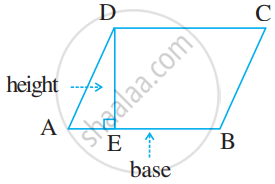
Area of parallelogram ABCD = (base x height)
-
Any side of a parallelogram can be chosen as the base of the parallelogram.
-
The perpendicular dropped on that side from the opposite vertex is known as height (altitude).
Example
Find the height ‘x’ if the area of the parallelogram is 24 cm2 and the base is 4 cm.
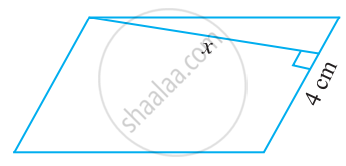
Area of parallelogram = b × h
Therefore, 24 = 4 × `x`
`24/4 = x`
x = 6 cm
So, the height of the parallelogram is 6 cm.
Example
The two sides of the parallelogram ABCD are 6 cm and 4 cm. The height corresponding to the base CD is 3 cm.
Find the
(i) area of the parallelogram.
(ii) the height corresponding to the base AD.

(i) Area of parallelogram = b × h
= 6 cm × 3 cm = 18 cm2
(ii) base (b) = 4 cm, height = x (say), Area = 18 cm2
Area of parallelogram = b × `x`
18 = 4 × `x`
`18/4 = x`
Therefore, x = 4.5 cm
Thus, the height corresponding to base AD is 4.5 cm.

